
The data stored in the list can be modified, such as "add", "delete", and "change".
You can add elements to the list through append.
#定义变量A,默认有3个元素
A = ['xiaoWang','xiaoZhang','xiaoHua']
print("-----添加之前,列表A的数据-----")
for tempName in A:
print(tempName)
#提示、并添加元素
temp = input('请输入要添加的学生姓名:')
A.append(temp)
print("-----添加之后,列表A的数据-----")
for tempName in A:
print(tempName)Result:
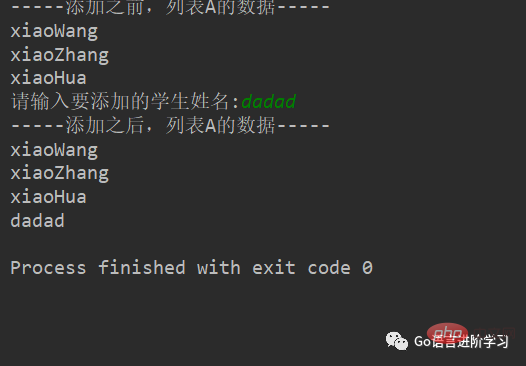
You can add elements from another collection to the list one by one through extend
>>> a = [1, 2] >>> b = [3, 4] >>> a.append(b) >>> print(a) [1, 2, [3, 4]] #运行结果 >>> a.extend(b) >>> print(a) [1, 2, [3, 4], 3, 4] #运行结果
insert(index, object) Inserts the element object
before index at the specified position.>>> a = [0, 1, 2] >>> a.insert(1, 3) >>> print(a) [0, 3, 1, 2]
修改元素的时候,要通过下标来确定要修改的是哪个元素,然后才能进行修改
demo:
# 定义变量A,默认有3个元素
A = ['xiaoWang', 'xiaoZhang', 'xiaoHua']
print("-----修改之前,列表A的数据-----")
for tempName in A:
print(tempName)
# 修改元素
A[1] = 'Lu'
print("-----修改之后,列表A的数据-----")
for tempName in A:
print(tempName)结果:
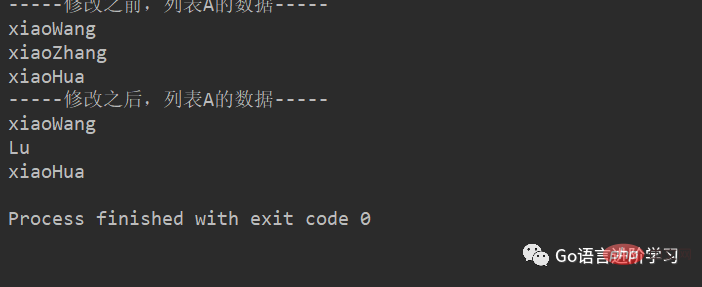
所谓的查找,就是看看指定的元素是否存在。
Python中查找的常用方法为:
in(存在),如果存在那么结果为true,否则为false。
not in(不存在),如果不存在那么结果为true,否则false。
#待查找的列表
nameList = ['xiaoWang','xiaoZhang','xiaoHua']
#获取用户要查找的名字
findName = input('请输入要查找的姓名:')
#查找是否存在
if findName in nameList:
print('在字典中找到了相同的名字')
else:
print('没有找到')运行结果:(找到)

运行结果:(没有找到)

in的方法只要会用了,那么not in也是同样的用法,只不过not in判断的是不存在。
index和count与字符串中的用法相同
>>> a = ['a', 'b', 'c', 'a', 'b'] >>> a.index('a', 1, 3) # 注意是左闭右开区间 Traceback (most recent call last): File "<stdin>", line 1, in <module> ValueError: 'a' is not in list >>> a.index('a', 1, 4) >>> print(a) 3 #运行结果 >>> a.count('b') >>> print(a) 2 #运行结果 >>> a.count('d') >>> print(a) 0 #运行结果
列表元素的常用删除方法有:
del:根据下标进行删除
pop:删除最后一个元素
remove:根据元素的值进行删除
movieName = ['加勒比海盗','骇客帝国','第一滴血','霍比特人','速度与激情']
print('------删除之前------')
for tempName in movieName:
print(tempName)
del movieName[2]
print('------删除之后------')
for tempName in movieName:
print(tempName)结果:

movieName = ['加勒比海盗','骇客帝国','第一滴血','霍比特人','速度与激情']
print('------删除之前------')
for tempName in movieName:
print(tempName)
movieName.pop()
print('------删除之后------')
for tempName in movieName:
print(tempName)结果:
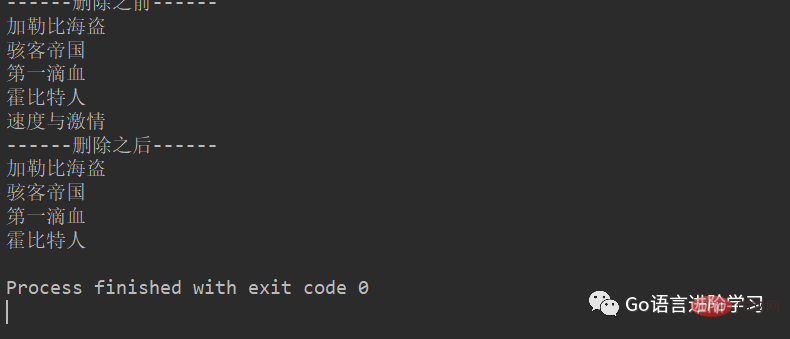
movieName = ['加勒比海盗','骇客帝国','第一滴血','指环王','霍比特人','速度与激情']
print('------删除之前------')
for tempName in movieName:
print(tempName)
movieName.remove('指环王')
print('------删除之后------')
for tempName in movieName:
print(tempName)结果:
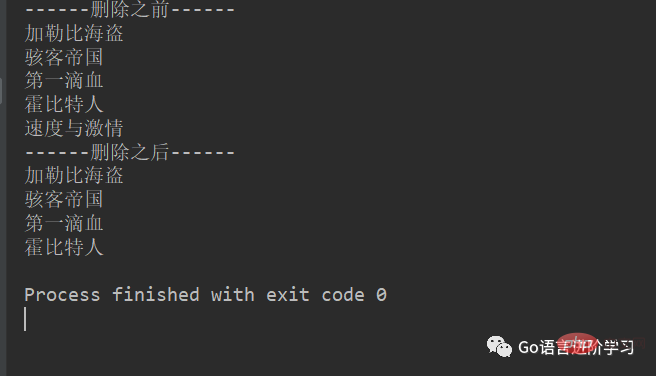
sort方法是将list按特定顺序重新排列,默认为由小到大,参数reverse=True可改为倒序,由大到小。
reverse方法是将list逆置。
>>> a = [1, 4, 2, 3] >>> print(a) [1, 4, 2, 3] #运行结果 >>> a.reverse() >>> print(a) [3, 2, 4, 1] #运行结果 >>> a.sort() >>> print(a) [1, 2, 3, 4] #运行结果 >>> a.sort(reverse=True) >>> print(a) [4, 3, 2, 1] #运行结果
类似while循环的嵌套,列表也是支持嵌套的。
一个列表中的元素又是一个列表,那么这就是列表的嵌套。
例:
Names= [['北京','甘肃'],
['南京','天津','广东'],
['山','上海']]小项目练习:
学校,有3个办公室,现在有8位老师等待工位的分配,请编写程序,完成随机的分配。
#encoding=utf-8
import random
# 定义一个列表用来保存3个办公室
offices = [[],[],[]]
# 定义一个列表用来存储8位老师的名字
names = ['A','B','C','D','E','F','G','H']
i = 0
for name in names:
index = random.randint(0,2)
offices[index].append(name)
i = 1
for tempNames in offices:
print('办公室%d的人数为:%d'%(i,len(tempNames)))
i+=1
for name in tempNames:
print("%s"%name,end='')
print("\n")
print("-"*20)运行结果如下:
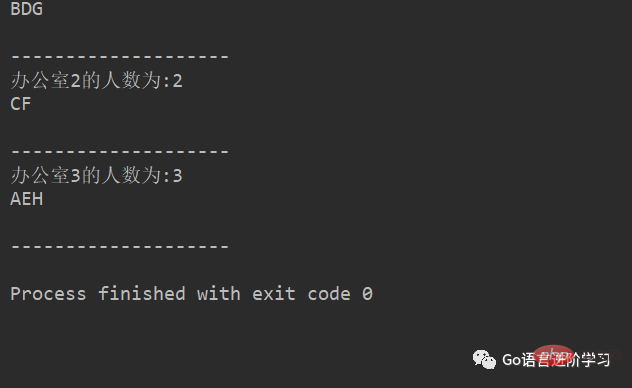
本文详细的讲解了Python基础 ,介绍了常见的列表操作,以及在实际操作中会遇到的问题,提供了解决方案。最后通过一个小项目,使读者能够更好的理解Python列表的使用方法。希望可以帮助你更好的学习。
The above is the detailed content of An article to help you understand the basics of Python list-related operations and nesting. For more information, please follow other related articles on the PHP Chinese website!